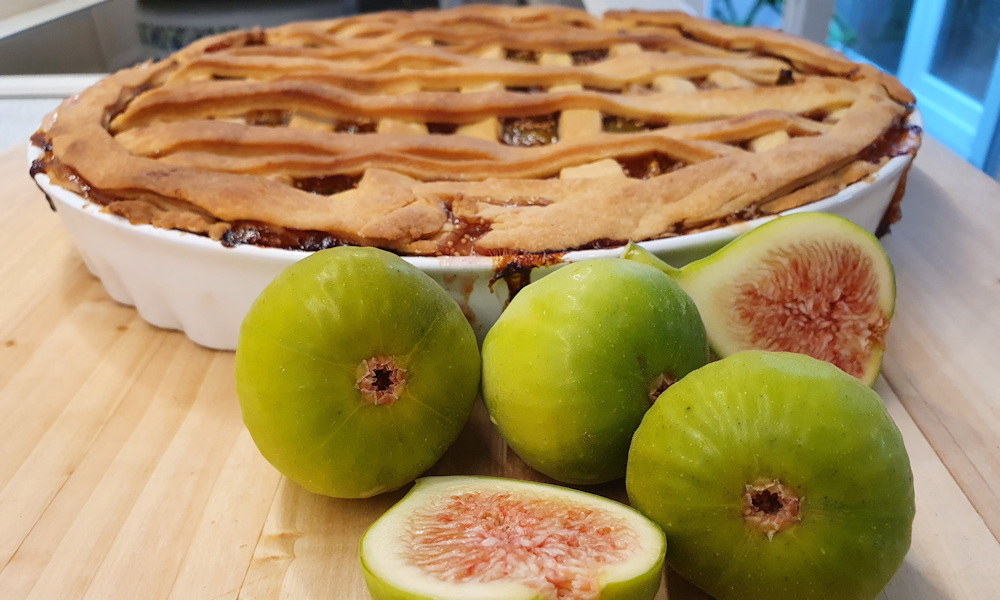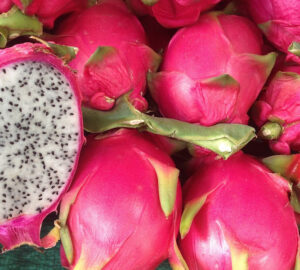Indulge in the sweet essence of summer with delightful fig tarts made from the figs grown right in your garden. This article presents a simple yet mouthwatering fig tart recipe, allowing you to savor the luscious flavors of figs in a delectable pastry treat.

Fig Tart Recipe
Ingredients
- Freshly picked figs from your garden
- 1/2 cup of granulated sugar
- 1 cup of all-purpose flour
- 1 tablespoon of freshly squeezed lemon juice
- 1/4 cup of unsalted butter, cold and cubed
- A pinch of salt
- A pinch of ground cinnamon
- A pinch of ground nutmeg

Instructions
- Preheat your oven to 375°F (190°C) and grease a tart pan or a baking dish.
- Wash the freshly picked figs thoroughly and cut off the stems. Slice the figs into thin, even pieces, and set them aside.
- In a mixing bowl, combine the all-purpose flour, a pinch of salt, and half of the granulated sugar. Mix well.
- Add the cold, cubed butter to the flour mixture and use a pastry cutter or your fingers to work the butter into the flour until the mixture resembles coarse crumbs.
- Gradually add ice-cold water, one tablespoon at a time, and gently mix until the dough comes together. Be careful not to overwork the dough.
- Roll out the dough on a floured surface to fit your tart pan or baking dish. Carefully transfer the dough to the pan and press it into the corners and edges.
- In a separate bowl, toss the sliced figs with the remaining granulated sugar, freshly squeezed lemon juice, ground cinnamon, and ground nutmeg until the figs are well coated.
- Arrange the seasoned fig slices on top of the tart dough in an even layer.
- Optional: You can create a lattice or simply leave the figs arranged neatly on the tart.
- Place the tart in the preheated oven and bake for 30-35 minutes or until the crust turns golden brown and the figs become tender.
- Once baked, remove the tart from the oven and let it cool slightly before serving.

Additional Optional Flavorings
While cinnamon and nutmeg are classic and delightful flavorings that pair wonderfully with figs, you can explore additional optional flavorings to further enhance the taste of your fig tart. Here are a few suggestions that could complement the figs and elevate the overall flavor profile:
- Vanilla extract: A splash of pure vanilla extract can add a subtle and aromatic sweetness to the fig filling, enhancing the natural flavors of the fruit.
- Lemon zest: Grate the zest of a fresh lemon and add it to the fig mixture. Lemon zest provides a bright, citrusy note that beautifully balances the sweetness of the figs.
- Orange zest: Similarly, you can use orange zest instead of lemon zest or combine both for a more complex citrus flavor that pairs well with figs.
- Almond extract: A touch of almond extract can lend a nutty and slightly marzipan-like flavor to the tart, complementing the figs and adding depth to the taste.
- Fresh herbs: Consider adding a pinch of finely chopped fresh rosemary or thyme to the fig mixture. Herbs can introduce a unique and savory element that harmonizes with the sweetness of the fruit.
- Honey: If you prefer a touch of extra sweetness, drizzling a bit of honey over the figs before baking can create a delicious caramelization effect.

Remember, these additional flavorings are entirely optional, and the choice ultimately depends on your personal taste preferences. Feel free to experiment with different combinations and quantities to find the perfect balance that suits your palate.

Making fig tarts with figs fresh from your own garden is a delightful way to celebrate the bounties of nature and the joys of homemade treats. The recipe provided here offers a perfect balance of the figs’ natural sweetness and the warm, comforting flavors of cinnamon and nutmeg, all encased in a flaky crust. So, venture into your garden, pick those ripe figs, and treat yourself to the goodness of a garden-to-table fig tart that will surely become a seasonal favorite among family and friends. Enjoy the simple pleasure of savoring the fruits of your labor, and let the essence of summer linger on your taste buds long after the last bite.









